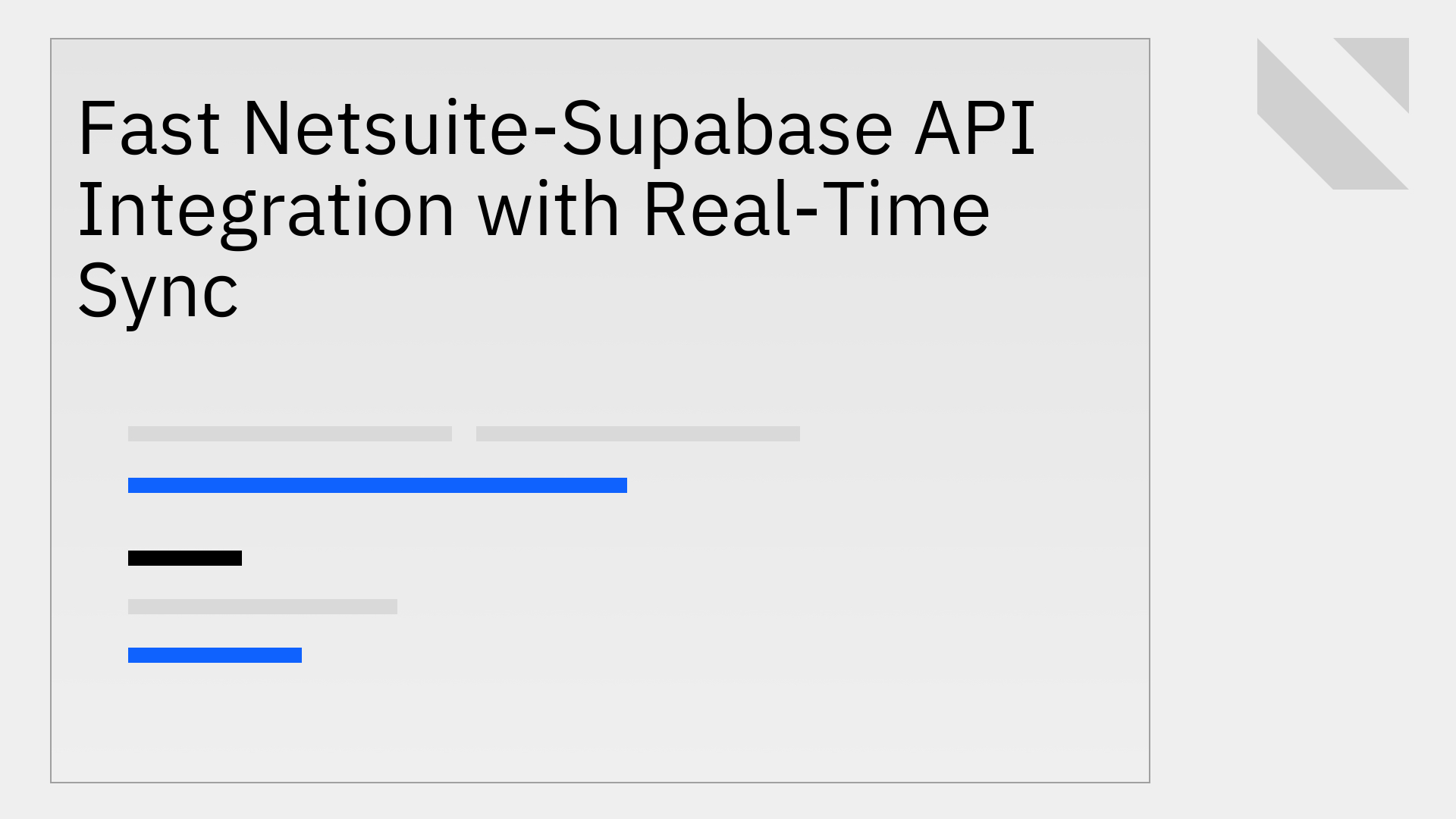
Connecting a powerful ERP like NetSuite with a modern, flexible backend such as Supabase is a common requirement for businesses aiming to build real-time applications, internal tools, and customer-facing portals that leverage current ERP data.
The central hypothesis is that a manual Netsuite Supabase API integration is inherently complex, resource-intensive, and difficult to maintain. The optimal solution is a specialized integration platform like Stacksync, which provides a validated methodology for establishing a fast, reliable, and real-time sync.
While NetSuite is a robust ERP, its API environment presents considerable complexity for developers. A preliminary analysis reveals that setting up a connection requires navigating multiple authentication methods, including Token-Based Authentication (TBA) and OAuth 2.0, each with its own specific implementation protocol [4]. Developers must also contend with NetSuite’s specific data structures and manage API rate limits to avoid service disruptions.
Conversely, Supabase is engineered for real-time functionality, allowing developers to build live features by subscribing directly to database changes [6]. This creates a fundamental architectural conflict. Bridging the gap between NetSuite’s often batch-oriented nature and Supabase's real-time requirements poses a significant engineering hurdle, validating the hypothesis that a custom approach is fraught with challenges.
Building a custom integration from scratch is a significant undertaking that forces engineering teams to become experts in systems outside their core business. This manual methodology is complex and carries high long-term costs.
The protocol involves:
Observationally, this method is not only slow and expensive, often consuming months of development time, but it also creates a brittle infrastructure that is prone to breaking and requires constant maintenance.
Stacksync offers a modern, validated protocol designed to eliminate the complexities of manual integration. Our platform provides a pre-built connector that handles all the "dirty plumbing" of the NetSuite-Supabase integration, allowing your team to focus on building valuable features.
The observable benefits include:
With Stacksync, executing a real-time Netsuite Supabase API integration is a straightforward procedure that takes only a few minutes.
First, log into your Stacksync account and select the NetSuite connector from our library. To authorize access, you will need to enable REST Web Services and Token-Based Authentication within your NetSuite account. This process generates the credentials required for a secure connection: your Consumer ID/Secret, Token ID/Secret, and Account ID. For a detailed walkthrough of this protocol, follow our official documentation.
Next, add your Supabase project as the data destination. Stacksync simplifies this by requiring only your database connection details. It is important to note that the connection must be made using the default postgres user to ensure full compatibility. You can find more information in our documentation on connecting Supabase.
Once both systems are connected, select the NetSuite objects you wish to sync, such as Customers, Invoices, or Sales Orders. Our platform offers a comprehensive Netsuite two-way sync integration for all standard and custom objects. Stacksync’s automatic field mapping feature intelligently matches columns between NetSuite and Supabase, and you can customize these mappings as needed. Choose between real-time sync or a custom frequency, then execute the integration with a single click.
Stacksync is purpose-built to provide a fast, reliable, and scalable integration solution that far surpasses manual methods.